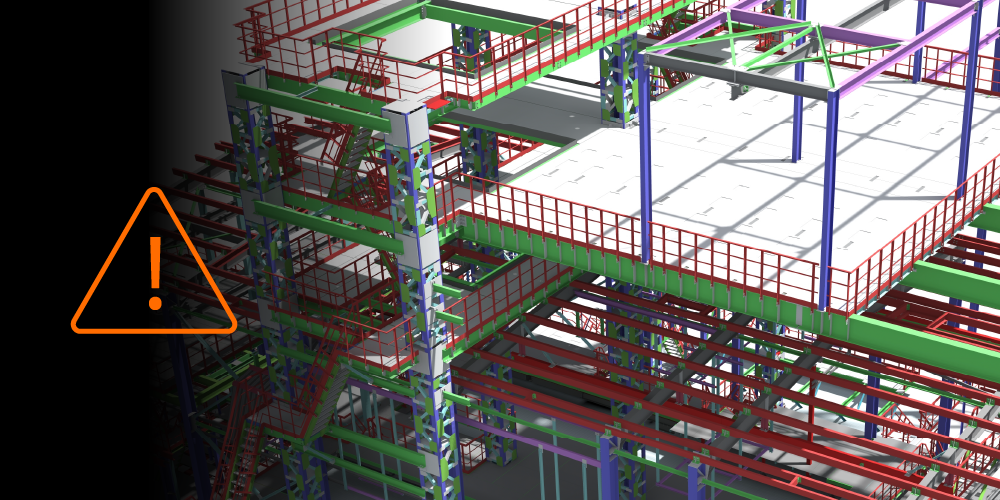Related Articles
— 14 min read
How Guaranteed Maximum Price (GMP) Contracts Work in Construction

Last Updated Aug 28, 2025

Will Carpenter
Senior Strategic Product Consultant, Procore
10 articles
Will is a Senior Strategic Product Consultant with a passion for utilising technology to enhance project workflows and efficiency in the construction industry. He plays a crucial role in assisting construction companies in maximising Procore's benefits.
With over a decade of experience in the construction industry, predominantly as a Civil Infrastructure Engineer, Will first used Procore as a customer himself, transforming his own daily operations. Captivated by its potential to elevate project and quality management, he made the decision to join Procore. His hands-on experience in construction, coupled with technical expertise, equips him to provide valuable insights and solutions for companies looking to optimise their workflows.
Last Updated Aug 28, 2025

The risk of financial loss is a common concern between owner-developers and head contractors (HCs) in construction. Owner-developers typically worry about the project going over budget, and head contractors (plus their subcontractors) often worry about not being paid for their time and effort.
One way to mitigate risk is to establish a guaranteed maximum price (GMP) contract, which sets a maximum price that the owner-developer is willing to pay, so the head contractor must absorb any additional costs. This type of construction agreement, which helps minimise financial risk for the owner-developer by setting a project cost limit, is often used on large, complex projects, where the owner-developer benefits from the early input of contractors.
Read on to find out how GMP contracts work, what their pros and cons are, and how they apply in a few hypothetical examples.
Table of contents
How GMP contracts work
A GMP contract is a contractual agreement between a head contractor and an owner-developer; one that sets a maximum cost for the construction work of a project.
In other words, the head contractor commits to completing the project without billing for more than the maximum price laid out in the contract. As a result, the head contractor is responsible for any costs that exceed the original contract price. This gives head contractors an incentive to keep costs under control, as failure to do so will hurt their bottom line.
For GMP projects, both parties should clearly define the scope of work, which they can do by including drawings and specifications as well as site-specific information. Without a detailed and thorough scope of work, head contractors could incur unexpected costs, reducing their project profitability.
What’s covered in a GMP contract?
| Item | Description |
|---|---|
| Project costs | Direct costs associated with the construction project, including labour, materials, equipment, subcontractor profit and expenses. |
| General conditions | Costs associated with the construction project that cannot be directly attributed to labour, materials or equipment. |
| Contractor markup | Often charged as a percentage of the total project cost that accounts for the head contractor’s profit and overhead. |
| Contingency | Often a percentage of the GMP that provides the head contractor with a financial buffer to account for unforeseen and unknown conditions. |
| Allowances | An amount set aside for known unknowns related to materials, labour and other project costs. For example, bathroom tiling isn’t specified in the construction set, so the contract adds in an allowance that provides a unit cost to account for that line item. |
While GMP contracts are typically established between owner-developers and head contractors – a relationship known as the ‘head contract’ – these agreements are also used by subcontractors and head contractors, usually for aspects of a project that demand specialist expertise in a certain trade.
Calculating GMP costs and negotiating
To determine the maximum price for a project, head contractors will do the following:
- Create an initial cost estimate for the entire project.
- Approach preferred subcontractors to tender out specific portions of the work.
- Determine costs for any work that the HC itself will perform on the project, which may vary according to the head contractor’s area of specialisation.
- Adjust for general conditions, contingency, allowances, overhead and profit.
- Submit GMP to the owner-developer and begin negotiations.
GMP contracts are often harder to negotiate than cost-plus or daywork contracts. Why? Because the head contractor assumes greater financial risk; after all, if the project goes over budget, then they are the one to pay. One way for head contractors to reduce their financial risk is to ensure that their estimates are accurate and realistic.
Therefore, they must ensure that their estimates are accurate and realistic.
Typically, a GMP contract will be used on large, complex projects, using project delivery methods such as design-build (DB).
Learn more: The 5 Key Types of Construction Contracts
Addressing scope changes
In design-build projects, the guaranteed maximum price for the project may change as the design is adapted with input from the contractor. Then, before construction begins, the parties establish a final GMP and add it to the contract.
One way to look at a GMP contract is that of an open book contract. Here, the head contractor lays everything bare for the owner-developer to see, costs and all. These include fees for labour, materials, equipment, direct costs and indirect costs such as overhead markup and profit.
In other words, GMP contracts provide the kind of transparency that owner-developers need, so they can reimburse their contractors properly. These types of contracts also give owner-developers the assurance that their contracts are not intentionally reaching the maximum price just to boost their own profits. Even if a head contractor tried, they’d be caught easily.
Because GMP agreements and open book contracts require a high degree of trust, they are most frequently used between owner-developers and contractors that already have an established relationship, good communication and a history of long-term cooperation. If the project runs over budget, the head contractor is responsible for covering the additional costs. However, there are exceptions to this rule; if the excess budget is due to a change of scope (from the owner-developer), change in design (outside the scope of work) or unforeseen site conditions, then the owner-developer may be responsible for paying the additional costs.
Ultimately, a good GMP contract will consider these scenarios, putting in place specific procedures and provisions to deal with cost overruns and scope changes. The contract should also specify under what circumstances an event becomes the responsibility of the head contractor or owner-developer.
Also known as variations, these amendments (to the original contract) are binding and outline the modifications to the project scope.
Negotiated clauses in a GMP contract
The simplest type of GMP sets a fixed maximum price for the contract. If the project exceeds the maximum price, then the contractor typically absorbs additional costs. That said, there are a variety of modifications that head contractors and owner-developers can add.
Here are a few common types of GMP contracts:
- Shared savings: This type of contract allows for any savings to be shared between the owner-developer and the head contractor according to a pre-agreed percentage. This can create an incentive for the head contractor to find cost savings during the project and for the owner-developer to lean on the HC’s expertise and approach to the project.
- Contingency: In this arrangement, a contingency amount is included in the GMP to cover unexpected costs. If the contingency is not used, it can be returned to the owner-developer, or it can be shared between the owner-developer and the head contractor.
- Escalation clause: This type of contract accounts for potential increases in materials or labour costs during the life of the project. It allows the GMP to be adjusted based on certain defined conditions, such as changes in market conditions.
- Allowances: This type of contract sets a GMP but includes specific allowances for certain items that may have uncertain costs or materials that have not yet been specified or selected at the beginning of the project. If these allowances are not fully used, the remaining funds may be returned to the client or shared.
Importantly, contracts rarely fit into simple categories. Owner-developers often use tailor-made GMP contracts for specific projects. Nonetheless, those contracts will still contain clauses like those mentioned above, creating incentives and modifications for head contractors to follow.
Advantages of GMP contracts
GMP contracts benefit both owner-developers and head contractors in the following ways.
| For owner-developers | For head contractors |
|---|---|
| Budget certainty The head contractor is responsible for managing the project within the agreed-upon budget (or guaranteed maximum price), minimising cost overruns. | Greater control The head contractor is responsible for managing the costs and schedule of the project, which gives them greater control over the entire process. |
| Quality control The head contractor is responsible for ensuring that the project meets the owner-developer’s requirements and specifications. | Possible incentives Some GMP contracts include performance incentives to encourage lower costs, such as split sharing, which splits the project savings between the head contractor and owner-developer. |
| Reduced risk A GMP contract shifts risks associated with cost overruns and project delays to the head contractor, providing greater protection against unexpected costs or delays. | Potentially higher fee Due to the head contractor’s inherent risk with a GMP, they can often charge a higher fee, which the HC can safeguard with greater control over the project and costs. |
| Increased transparency Open-book accounting throughout the entire process enables owner-developers to track the true costs as the project unfolds. | Lower risk of unexpected outcomes Because the HC is involved earlier in the project, they have greater influence over the design and approach, enabling them to develop a realistic GMP. |
| Higher-quality end product GMP is a collaborative process between the owner-developer, architect and head contractor. This creates a more holistic approach to decision-making and often delivers a higher-quality project. | Opportunity to foster trust The transparency and strong relationship needed to successfully execute a GMP contract can enable head contractors to establish trust that paves the way for potential future partnerships. |
Who benefits the most from GMP contracts? Typically, owner-developers, and in particular those who are concerned about keeping costs under control without compromising on quality. Meanwhile, for head contractors, GMP contracts give them the assurance of a highly profitable outcome; that is, if their budget is accurate and they manage the project effectively.
Overall, GMP contracts help strike the perfect balance, combining the cost-reimbursement of a cost-plus contract and the cost predictability of a lump sum contract.
Disadvantages of GMP contracts
Although GMP contracts offer several advantages, they also have some drawbacks. However, parties can reduce these risks by formulating well-structured contracts, establishing strong relationships and conducting a thorough preconstruction effort.
| For owners-developers | For head contractors |
|---|---|
| Unforeseen and unknown conditions With a GMP agreement, unforeseen or unknown conditions are often the financial responsibility of the owner-developer. | Detailed, careful review of specifications necessary Not all costs are considered the owner-developer’s responsibility, so head contractors must review the contract carefully to ensure profitability. |
| Trusted partner required Without a trusted partner, owner-developers may worry that the HC is inflating costs or trying to cut corners to increase their profit, resulting in lower-quality work. | Meticulous cost tracking required The HC must provide detailed documentation of costs throughout the project and to receive compensation. This administrative work requires significant time and effort. |
| Potential for disputes Disputes may occur over what costs fall under the GMP, particularly for unforeseen or unknown items, as the owner-developer bears ultimate responsibility for the project cost. | Variations disputes As the head contractor is supposed to account for all costs in the GMP, an owner-developer may dispute any variations. |
By preparing a detailed, thorough and comprehensive GMP contract, owner-developers and head contractors can reduce (or even prevent) the risk of the above-mentioned downfalls occurring.
How can head contractors prepare great GMP contracts? They should include detailed project requirements and specifications, as well as precise cost estimates. What’s more, they should also identify any potential risks, and then address those risks with appropriate mitigation strategies.
The key to collaborating on a GMP contract is establishing a foundation of trust. When an owner-developer and head contractor have an established, long-term relationship, they both have an incentive to come together and formulate solutions that benefit not just them but also the final product.
Example of a GMP contract
Sometimes the best way to learn a new topic is by example. To demonstrate this, let’s take a look at how a GMP contract works in a hypothetical construction project.
A commercial real estate company approaches Gray Construction, a head contractor they have worked with before, to help them transform an existing warehouse into a mixed-use building. Due to the complexity of the project, the owner-developer decides to use a GMP contract with a design-build delivery method. By doing so, the owner-developer can bring in the head contractor early, and since the two businesses already have a strong foundation of trust, a GMP contract is a low-risk option for them both.
The contractor works closely with the architect to advise on the cost of different design options, materials, labour availability and workforce planning during the design development phase. While developing the project, the head contractor coordinates with subcontractors to determine the pricing for various building components. By receiving immediate price estimates and feedback, the team can take an iterative approach to design coordination — a cyclic process of prototyping, testing and evaluating — to improve the quality and design as well as keep costs under control. During this phase, the contractors and designers produce a set of construction drawings that are realistic and within budget.
Gray Construction then gives the owner-developer a GMP proposal. Aside from providing a detailed cost breakdown, including the overhead and profit, the proposal also includes allowances (or contingencies) for unforeseen circumstances. It also has general terms and conditions, such as how to resolve disputes that arise. Then, the owner-developer reviews the GMP proposal and negotiates with Gray Construction until they agree that the price is fair and reasonable.
The two parties both reach an agreement and sign the GMP contract. Gray Construction is responsible for completing the project within the guaranteed maximum price, and they are responsible for any cost overruns. However, in this case, both parties agree that if the project is completed under budget, then they both share the savings. This gives the head contractor an incentive to find ways to reduce the project cost without sacrificing quality, thus increasing the profitability potential for both parties.
As the project progresses, Gray Construction updates the owner-developer on the progress and any changes that may affect the cost. If any cost-impacting changes do occur, then the head contractor must reconcile these differences in line with the original agreement. As long as both the head contractor and owner-developer agree on the change, they can amend the contract and continue with construction. Occasionally, the two parties may need to use a dispute resolution process — ideally, the one laid out in the agreement — which may involve using binding arbitration.
Suddenly, trouble strikes. During demolition, Gray Construction discovers that the building’s structure is unsound and requires a structural upgrade. Since this event is not accounted for in the original agreement, the owner-developer is responsible for the additional costs related to this scope change. However, there’s a catch: both parties were aware that projects of this nature – adaptive reuse projects – involve significant renovation work and carry unknown risks, so they set aside substantial contingencies to cover such additional costs. Gray Construction informs the owner-developer of the situation, who agrees to use some of the contingency funds to cover the cost of the structural upgrade. This way, the project can proceed without any additional expenses.
As they complete their portion of the work, each subcontractor submits a pay application to Gray Construction, who then reviews and approves it. Then, usually each month, when Gray Construction applies for payment from the owner-developer, they include the subcontractor’s invoice amount, which they can do using invoice management software. Once the owner-developer approves the application for payment, the head contractor uses those funds to pay their subcontractors.
Upon completing the contract, Gray Construction provides the owner-developer with as-built drawings, warranties and operation and maintenance manuals. The owner-developer conducts a final inspects and pays Gray Construction the remainder of their costs and fees. Using a defect list, Gray Construction addresses any final items and pays any retainage to their subcontractors.
As an added bonus, Gray Construction makes a surprising discovery: They were able to complete the project for $300,000 less than the GMP budget. As per the split-savings clause in the GMP contract, Gray Construction receives 30 per cent of the savings, and the owner-developer pockets the remaining 70 per cent. The result? Both parties enjoy a higher profit than originally anticipated.
Overall, the GMP agreement was a tremendous success. Gray Construction was able to give the owner-developer greater cost certainty and peace of mind by offering a guaranteed maximum price for their work. Also, the long-standing relationship between the two made it easy for them to collaborate and deliver a high-quality construction project under budget, allowing them to maximise their profits.
Mitigating risk on GMP contracts
While preparing a GMP contract, owner-developers and head contractors can use a variety of risk-mitigating strategies. They can also determine the profitability of the project during this contract formation phase.
To prevent future misunderstandings or disagreements, both parties should thoroughly review and analyse all documents that contribute to the scope of work. By identifying potential issues and assessing their likelihood and potential impact, they can each develop strategies to address these concerns in the contract.
Both owner-developers and head contractors should carefully review and negotiate the terms of the contract, ensuring that they are fair, reasonable and accurate. It is also wise for the contract to have a well-defined variations process that outlines how to handle changes and measure their impact on the project cost and schedule.
Lastly, entering into a GMP agreement – based on a foundation of trust – helps create a better environment for both parties. They can more easily approach the project, collaborate and deliver their highest-quality work.
Best of all? A clearly defined GMP contract can help both head contractors and owner-developers earn more money; even if the project is complex or has unknown conditions.
See what’s coming in construction over the next decade.
Download the Future State of Construction Report for insights, trends, and innovations shaping the industry over the next 8–10 years.

Categories:
Written by

Will Carpenter
Senior Strategic Product Consultant, Procore | Procore
10 articles
Will is a Senior Strategic Product Consultant with a passion for utilising technology to enhance project workflows and efficiency in the construction industry. He plays a crucial role in assisting construction companies in maximising Procore's benefits.
With over a decade of experience in the construction industry, predominantly as a Civil Infrastructure Engineer, Will first used Procore as a customer himself, transforming his own daily operations. Captivated by its potential to elevate project and quality management, he made the decision to join Procore. His hands-on experience in construction, coupled with technical expertise, equips him to provide valuable insights and solutions for companies looking to optimise their workflows.
Explore more helpful resources

Managing Direct Costs in Construction: How Visibility Drives Profitability
Direct costs define the financial reality of every construction project. They cover the labour, materials, and equipment that drive delivery and determine profitability. But even the best-planned budgets can shift...

BIM Clash Detection: Reducing Rework, Delays, and Risk in Construction
Design clashes can be a significant hidden cost in construction, as each conflict between systems risks expensive rework, project delays, and reduced margins. BIM clash detection empowers teams to identify...

Next-Gen Job-Costing: Ready to Move? 5 Things to Consider Before You Get Started
In this three-part series, Quantity Surveyor turned Financial Solutions Specialist Clint Burgess uncovers the real-world gains for people, processes, and profits when businesses move from legacy to next-generation Enterprise Resource...

From Workarounds to Workflow: Solving Construction’s Legacy Job-Costing System Challenges with Next-Gen Tools
In this three-part series, Quantity Surveyor turned Financial Solutions Specialist Clint Burgess uncovers the real-world gains for people, processes, and profits when businesses move from legacy to next-generation Enterprise Resource...
